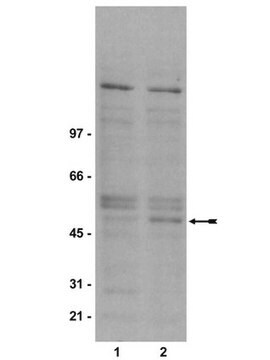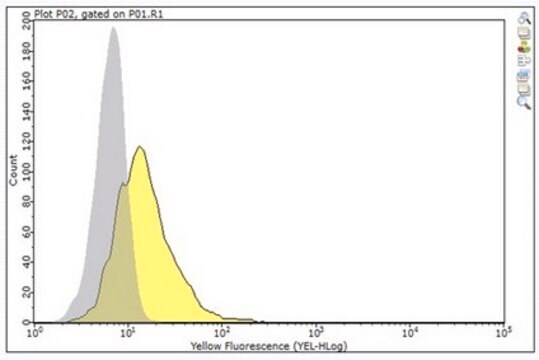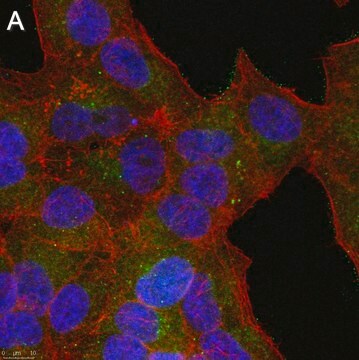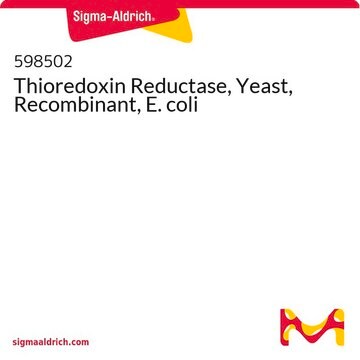05-413
Anti-phospho-GSK3 (Tyr279/Tyr216) Antibody, clone 5G-2F
clone 5G-2F, Upstate®, from mouse
Synonyme(s) :
GSK-3 alpha, glycogen synthase kinase 3 alpha
About This Item
Produits recommandés
Source biologique
mouse
Niveau de qualité
Forme d'anticorps
purified immunoglobulin
Type de produit anticorps
primary antibodies
Clone
5G-2F, monoclonal
Espèces réactives
mouse, human, rat
Fabricant/nom de marque
Upstate®
Technique(s)
western blot: suitable
Isotype
IgG1κ
Adéquation
not suitable for immunoprecipitation
Numéro d'accès NCBI
Numéro d'accès UniProt
Conditions d'expédition
dry ice
Modification post-traductionnelle de la cible
phosphorylation (pTyr279/pTyr216)
Informations sur le gène
human ... GSK3A(2931)
mouse ... Gsk3A(606496)
rat ... Gsk3A(50686)
Description générale
There exists two isoforms of GSK3, alpha and beta, and they show a high degree of amino acid homology. The two isoforms of GSK3 are strictly regulated via phosphorylation. Activation of GSK3 beta is dependent upon the phosphorylation of Tyr216 (Tyr279 in GSK3 alpha). Upon activation, it has been shown to phosphorylate a number of different cellular proteins, including p53, c-Myc, c-Jun, heat shock factor 1 (HSF1), and cyclin D1
Spécificité
Immunogène
Application
Signaling
PI3K, Akt, & mTOR Signaling
Qualité
Western Blot Analysis:
0.5-2 µg/mL of this lot detected phospho-GSK3 in RIPA lysates from human Jurkat cells. Previous lots detected phospho-GSK3 in mouse 3T3/A31, human A431 lysates and rat L6 cells
Description de la cible
Forme physique
Stockage et stabilité
Handling Recommendations:
Upon receipt, and prior to removing the cap, centrifuge the vial and gently mix the solution. Aliquot into microcentrifuge tubes and store at -20ºC. Avoid repeated freeze/thaw cycles, which may damage IgG and affect product performance.
Remarque sur l'analyse
Positive Antigen Control: Catalog #12-303, Jurkat cell lysate.
Autres remarques
Informations légales
Clause de non-responsabilité
Vous ne trouvez pas le bon produit ?
Essayez notre Outil de sélection de produits.
Code de la classe de stockage
12 - Non Combustible Liquids
Classe de danger pour l'eau (WGK)
WGK 1
Point d'éclair (°F)
Not applicable
Point d'éclair (°C)
Not applicable
Certificats d'analyse (COA)
Recherchez un Certificats d'analyse (COA) en saisissant le numéro de lot du produit. Les numéros de lot figurent sur l'étiquette du produit après les mots "Lot" ou "Batch".
Déjà en possession de ce produit ?
Retrouvez la documentation relative aux produits que vous avez récemment achetés dans la Bibliothèque de documents.
Notre équipe de scientifiques dispose d'une expérience dans tous les secteurs de la recherche, notamment en sciences de la vie, science des matériaux, synthèse chimique, chromatographie, analyse et dans de nombreux autres domaines..
Contacter notre Service technique








